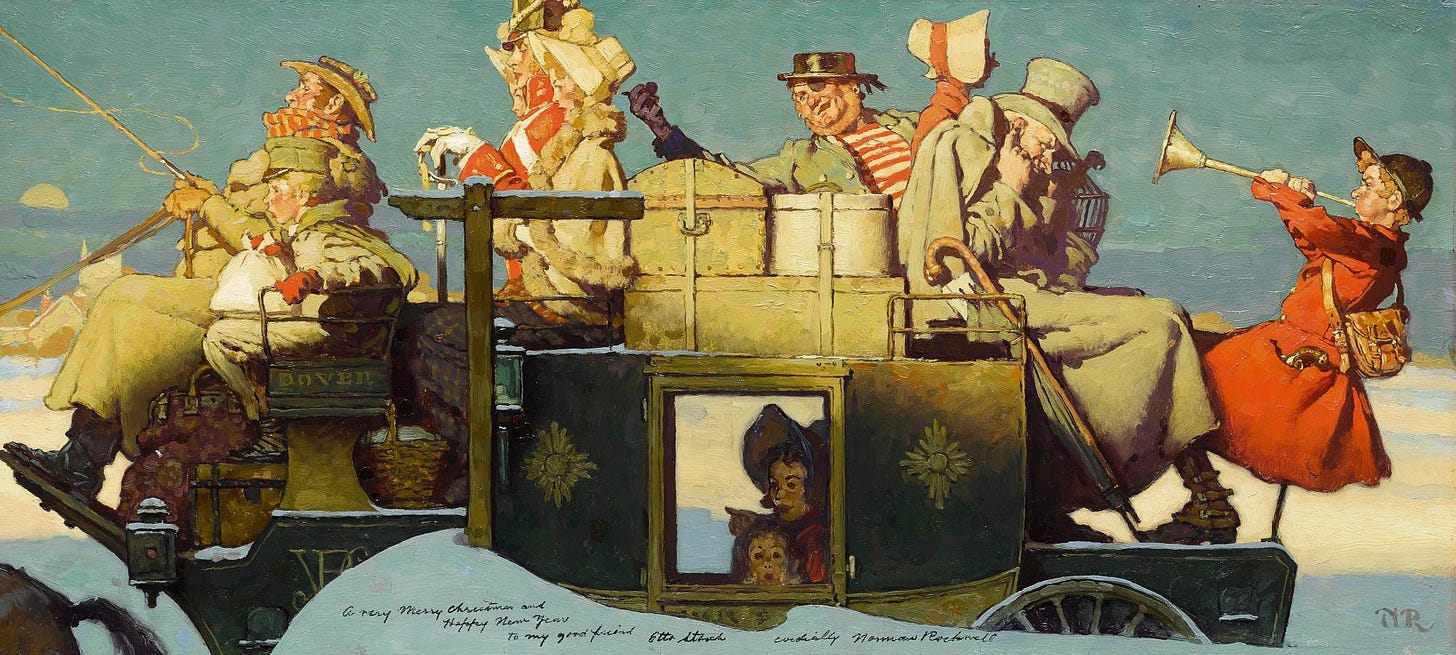Value Before Color?
What's the thought process in planning a composition?
An art student asked me:
Dear James,
I’ve been wondering about the relationship between color and value. Do you approach them as two different steps of a painting? For example some people see a well-worked-out monochromatic grisaille painting as perhaps the most important step in a painting, with the scumbled on color as an accentuating element. On the other hand some people have a more Alla Prima approach where they jump right into color, and create the illusion of "turning" surfaces and value directly through color mixing. How long do you spend on the monochromatic stage of a painting?
---Pro Cedure.
Dear Pro Cedure,
Great question! Yes, I do think about the value structure as a separate step from color in developing a studio composition. I like to do that thinking as a preliminary step in the charcoal or pencil stage. As I'm sure you know, Norman Rockwell was the king of planning the value design first in charcoal before jumping into oil, such as his study and finished painting "Dover Coach."
Whether you plan the tonal structure as a separate study (as Rockwell, Cornwell, Lovell and many academics did) or whether you establish it on the final canvas as a preliminary stage of painting, either way it really is the foundation of a good picture. Color adds a lot, but it can’t save a bad value design.
By the way, here’s a promotional word for tomorrow’s event:
I’ll be doing a book signing tomorrow, Nov. 7 at 6:00 at Oblong Books in Rhinebeck, New York.
I expect to be signing: DINOTOPIA• COLOR AND LIGHT • IMAGINATIVE REALISM • LIFE LESSONS FROM DINOSAURS, plus we’ve got a preview copy that you can see of THE ARTIST’S GUIDE TO SKETCHING. I’ll bring along a couple original paintings and do a brief talk and Q&A. Hope to see you there!
Even with a thorough planning, you can still turn forms with color temperature as you suggested in your question. Rockwell is a good artist to study for that, and I believe many of his instincts for impressionistic color effects came from his study with Charles Hawthorne. But really all those early illustrators, including Howard Pyle and Walter Everett, were good at value organization.
In my experience such planning doesn’t take away from painterly spontaneity. On the contrary, it opens the doors to free-style brush handling, because you’ve already solved a lot of the other issues of value and design.
With a fantasy or historical painting, once I have figured out the tonal design in two or three values as a separate step, I begin the lay-in or block-in, which is typically with a big brush, transparent pigment, and limited color. The whole block-in step should only take an hour or two.
My goal in the preliminary block-in is to establish not only the tonal statement, but also the big warm and cool relationships and the overall color mood at the very outset of the painting process. I stay well short of darkest darks, saving those for the finishing steps of the painting.
When working on location, or when painting the figure in under two hours, I am under shorter time requirements. So I often dive right in with color, but sometimes I do a quick pencil thumbnail sketch to plan the value design.
Case Study of ”Waterfall City”
Let’s take one of my paintings as an example of these principles in action:







